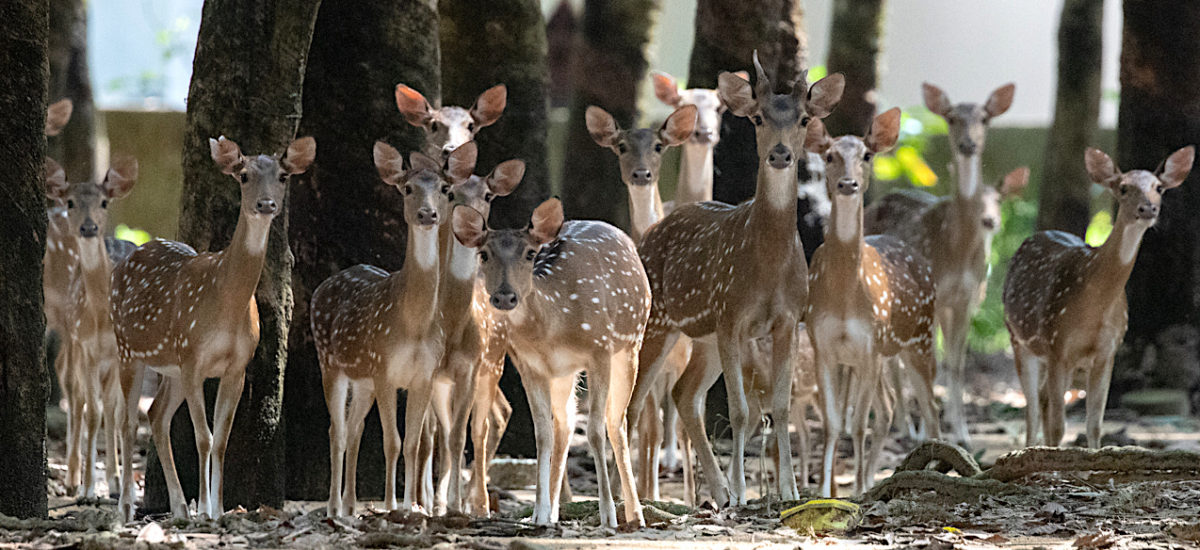Photos courtesy of Mahendra Dhammika
A bright yellow road sign on a quiet suburban road, more than 20 km from Colombo, warns oncoming motor traffic of an unlikely pedestrian. This area has become an odd choice of home to a few herds of spotted deer. A subspecies endemic to the island these shy, spotted creatures have made their home in the not so developed, wooded areas of Athurugiriya. The community claims these deer share common ancestors, a few deer that were kept in the temple by the local Buddhist monk, in the 1980s. Released from their temple premises, the deer have grown into a significantly sized herd, perhaps due to the absence of natural predators, unlike in their usual forest or grassland habitats.

Like most urban wildlife, the deer keep a healthy distance from the residents and passers-by. They are mostly seen at night or in the early hours of the morning. The sun had gone down and we were heading back home. The absence of streetlights may have encouraged this young deer to venture closer to the roadside, when the front lights of our car caught them by surprise.
The exception to these sightings are the deer that roam the temple grounds. They seemed to have found a safe haven in the temple premises and can be seen there even at noon, co-existing peacefully with a small pack of free-roaming dogs.

Although the deer are protected by law and have no natural predators, they are at constant risk of being ensnared by poachers; a sour reminder that there is little safety in a system that cares so little for non-human beings. Getting caught in the snare means a slow and painful death or the escape with a loss of a limb.
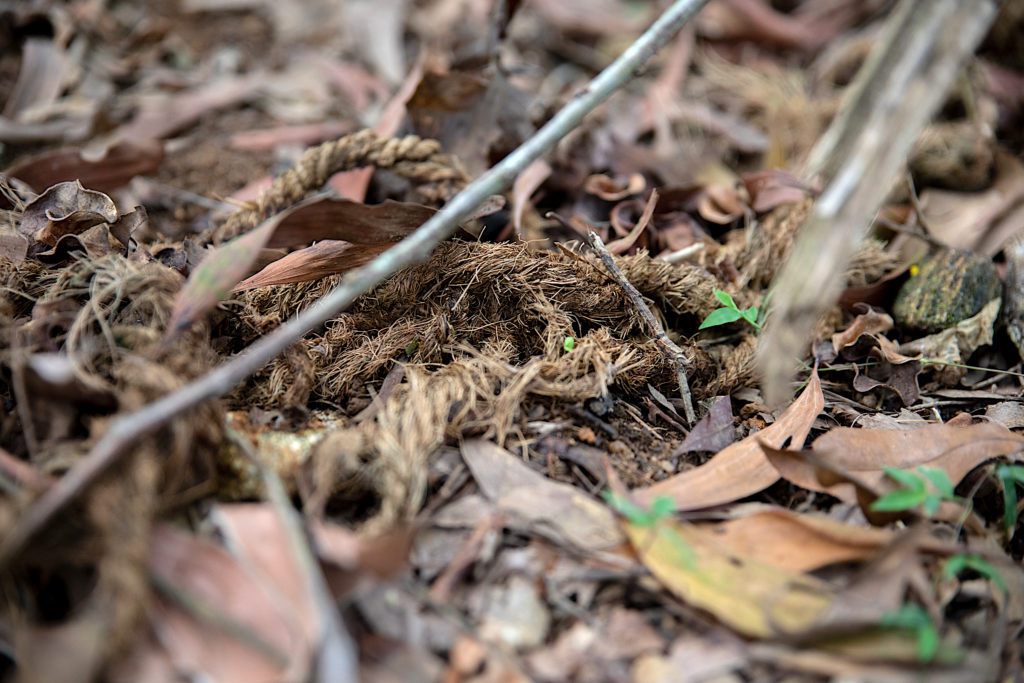
The Lokuge family lives in close proximity to the area where the deer have made their home. In July 2022 Anuradha, the second of the Lokuge boys, put up a Facebook post asking for help to transport a young injured deer to the wildlife hospital. We responded but our hatchback was too small to comfortably transport the terrified being. On any other day the Department of Wildlife would pick up the animal and take them back to their hospital and rehabilitation centre. If that weren’t the case, someone in the locality would have volunteered to do the needful. But in the backdrop of Sri Lanka’s biggest economic crisis since her independence in 1948 and the subsequent fuel shortage, a post like this would have quickly slipped under the radar due to the sheer number of pleas asking for help. There were innumerable requests from both humans and animals stranded at home, unable to reach hospitals to receive lifesaving medical aid. Scores of animal caregivers had to watch the animals they care for painstakingly succumb to their injuries or illness. Anuradha managed to get his rescued deer help but many of them aren’t as fortunate.
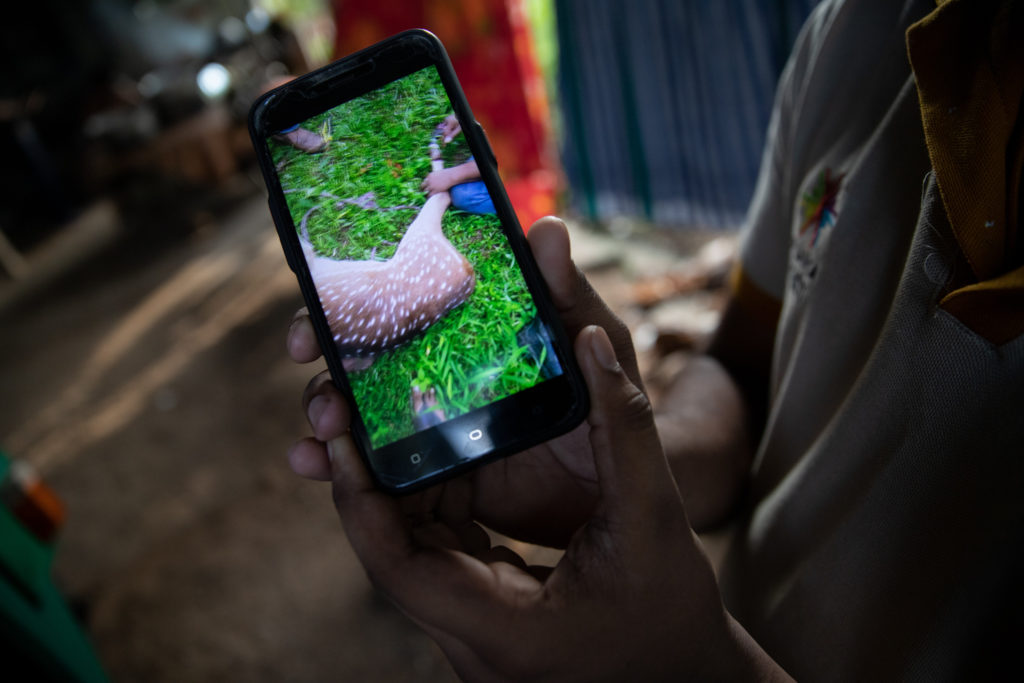
Some escape the snares with deep cuts and will likely succumb to sepsis. Many of them walk away with a severed limb. The ones that don’t escape are bludgeoned to death, skinned at the site and their flesh moved out of the forest to be sold illegally.
We reconnected with Anuradha in November 2022 to ask him about his rescue and about the deer in Athurugiriya. It turned out that his family and the herd have a connection that goes back 15 years. Every night after 11 pm, about the time everyone else wraps up for the day, the backyard of the Lokuge family comes alive. About a dozen marble eyes reflect off a small light from their kitchen. Cautiously they inch forward towards a cement slab strewn with rice, the families’ leftovers from the day. The deer, although naturally shy, have grown accustomed to the Lokuge family. They say some days the young deer even play with their friendly dog Trixie.
Not everyone in this community engages with the deer like this family does. Like most wild animals, the deer also constantly seesaw between the perceptions of an admired wild animal and the urban pest that needs to go. Their big appetites aren’t welcome by the suburban farmer, struggling to make ends meet on his small plot of land. Bolting across the roads the deer have thrown many unsuspecting motorcyclists, who take to the roads at dawn or dusk, off their motorbikes.
Although the deer are sometimes perceived to be a nuisance like most wildlife that live on the fringes of urban or suburban communities, most people still choose to co-exist peacefully. It’s abundantly clear that the snares don’t sit well with the community adjoining the forest. Tired of waiting on a broken system that has become numb to complaint or plea, the community regularly go up the forest and remove the snares themselves. Their efforts, although not organised and less direct, are similar to that of the UK based Hunt Saboteurs – a group that responds to fox hunting parties using non-violent direct action. We joined Anuradha, Vibhusha, his wife Dehami and their two dogs on a hike up the forest on a quiet Sunday morning.
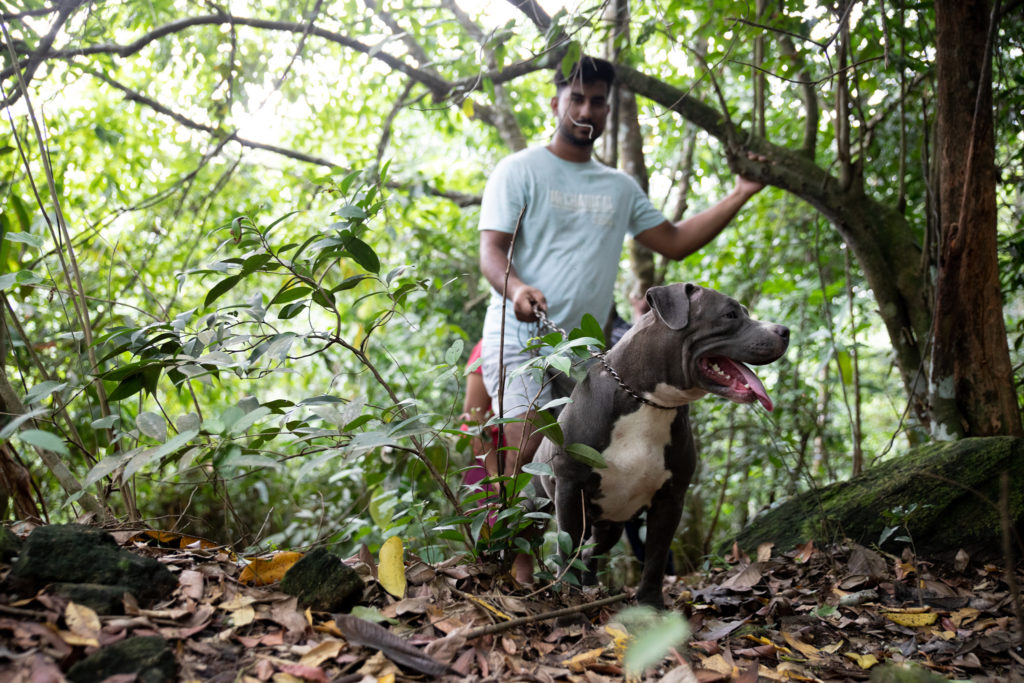
The herd was within eyeshot but scrambled away at the sight of us. We spotted some snares, set up and waiting, for an unsuspecting animal. Dehami is the first to spot the two black ribbons, which were likely used by a schoolgirl to tie her hair. She is softened with emotion when she says the man who hunts the animals has two little girls. “The ribbons are probably his daughter’s hair ties,” she says. He is an alcoholic and despite many attempts to engage him in conversation, the community is always met with aggression. However, the people who set the traps cannot bear the full weight of the blame as many of them aren’t hunting for amusement or sport and are simply trying to reel themselves out of poverty.
Anuradha says most of the snares are made using the clutch cables from tuk-tuks. First he attempted to cut the wire loop with a plier. He then decided it’s best to dismantle the whole thing and pulled it apart completely. Further into the forest, there were also snares made of coir and nylon rope.
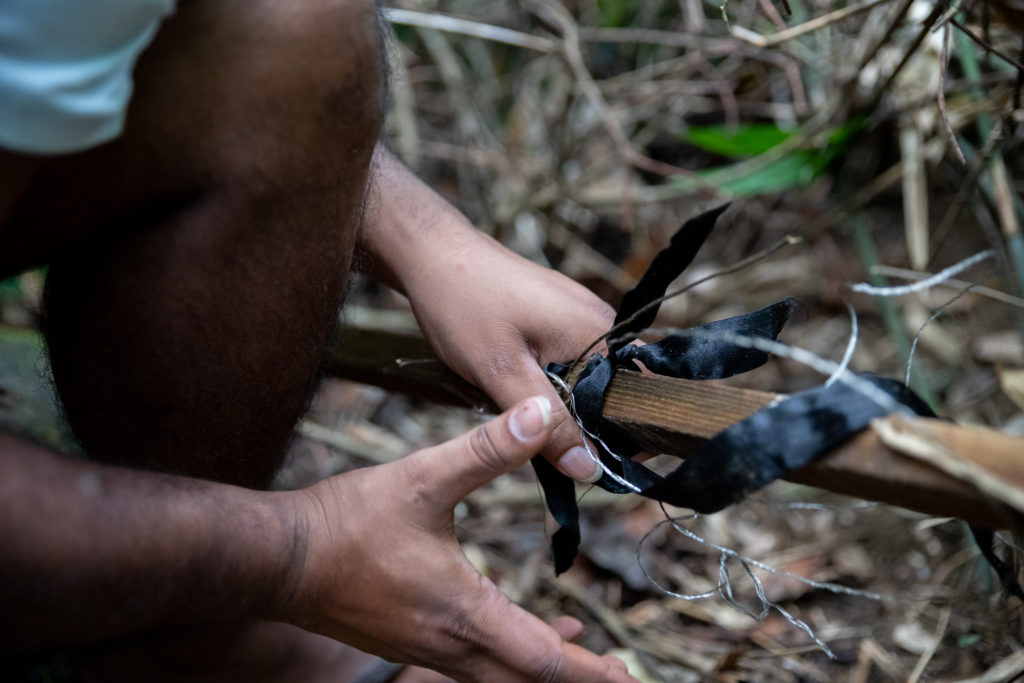
Heading down towards their home, we had a chat with Mr. Lokuge, Anuradha’s and Vibhusha’s father. Living in such close proximity to the forest patch, he claimed he has heard screams from deer that have been caught in snares, meeting their violent end.
The deer rescued by the Lokuge boys recovered from the initial injuries at the Athidiya Wildlife Rehabilitation Centre, where she was first treated. Vibhusha had dropped by to see her and was told that although she survived her injuries, she could not be released into the wild as a multiple limb amputee. When we accompanied Anuradha on their second visit, we were told that she passed away, possibly due to a secondary infection. There was visible sadness in his eyes as he heard this information.
Deer are incredibly sensitive creatures, easily stressed, making it extra difficult to provide veterinary care for them. The Wildlife Department hospital is severely underfunded and its hospital runs on a shoestring budget, only possible due to the commitment, kindness and sheer genius of the doctors and wildlife officers. On an island that is blessed with so much wildlife that is so little protected, little acts of kindness – removing a snare, getting an animal to hospital, providing care in the least intrusive way – collectively form a resistance to a violent system that is rarely even seen as one.

